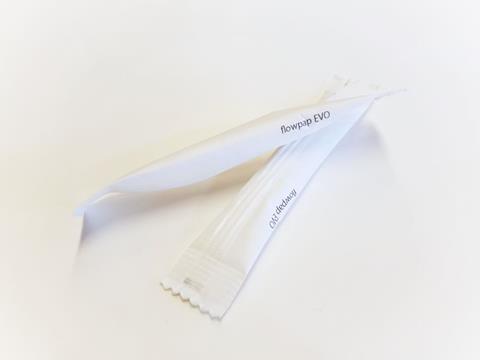
Only a week to go until the live Sustainability Awards 2019 ceremony at FachPack! Join us to discover the worthy winners of the most prestigious sustainability competition for packaging innovation.
In anticipation of the event, we explore the 25 standout solutions that made it to the finals, handpicked by our independent, expert judging panel. Today, Tapani Holappa, sales director for export and subcontracting services at Pyroll, talks us through the development of FlowPap® Evo, a plastic-free, biodegradable and heat-sealable paper packaging and a finalist in the category ‘bio-based’.
• Congratulations on being selected as a Sustainability Awards 2019 finalist! Could you please introduce your successful initiative?
Thank you! We were so delighted and happy when we heard that our solution was selected to be one of the finalists. The new paper packaging material was built up over time based and it is based on renewable fibre raw material in which the functionality has been achieved without utilizing either polyethylene or polypropylene film/coating. The material has the natural feel and appearance of paper, it is breathable and easy to open. Since the material is highly based on sustainable fibre, the solution can also be recycled along with paper/cartonboard.
Our solution provides a way to reduce usage of plastic films, or, in some applications, even replace those completely. Of course, recyclability is very important so that fibre utilized here can be circulated and reused. So far there has been a substantial amount of interest towards our solution from the market and generating follow-up and testing as well.
• ‘Sustainable packaging’ is a contentious concept, which means different things to different people, and anyone working in packaging understands that it’s easy to make things worse according to one environmental metric while making improvements according to another. In your opinion should there be a hierarchy among our sustainability goals?
A packaging has to fulfil many requirements. In terms of sustainability it could be proposed that material and packaging solutions would be built up firstly considering that it is preventing increase of food waste, secondly enabling recyclability and thirdly utilizing renewable resources to the extent as it is possible.
• Clearly, sustainability in packaging needs to be achieved by many stakeholders acting together, not by someone with a silver bullet. Thinking about the wider picture, what areas of innovation or action would you like to see across the value chain in the coming years to meet the demands of nature and society?
Especially considering resource scarcity, nature provides only a limited amount of renewable resources at a time and non-renewables shall eventually come to an end. Smart and sustainable utilization of resources and closing the loop could be considered to be of major importance. New packaging material solutions based for example on pure and safe fibre from sustainably managed forests should and with great hope will provide novel innovations.











